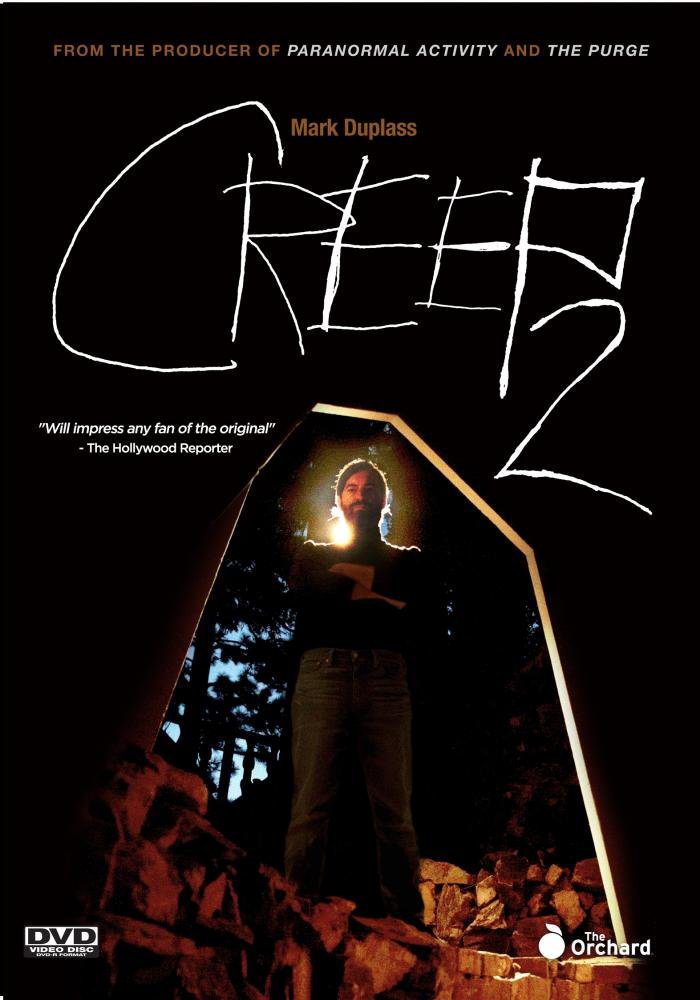
Written by Kristen Lopez
In 2014, director Patrick Brice helmed Creep, a localized found-footage horror movie about two men who meet through an ad. The film opened up questions about gay panic and the nature of the found-footage film, but overall remains an incredibly unsettling horror film with some of the most awkward comedy you’ll see. Brice and star Mark Duplass had already intended to turn Creep into a trilogy, and so it is with the release of Creep 2. Though lacking in the cartoony terror of its predecessor, Creep 2 illustrates how the simple switch of a protagonist’s gender can unleash a whole new host of things to be frightened by. In our current world of open discussions about sexual harassment, Creep 2 finds fright in its stark realities.
Sara (Desiree Akhavan) is the host of a fledgling YouTube series called Encounters. Frustrated by the public’s lack of interest, Sara makes it her mission to give people something insane to watch. She stumbles upon an ad looking for a documentarian where she meets Aaron (Duplass). Aaron openly admits he’s a serial killer in the midst of a midlife crisis. He wants Sara to make a film about his life. But as the two become more entrenched in the collaboration process, Sara starts to realize this might be an encounter that could kill her.
The original Creep was effective through the power of its two leads who were, for the most part, the only characters in the film. If you haven’t watched the original it might be a bit surprising to see Karan Soni in the opening scene, discovering a package that obviously frightens him. He calls his best friend who ends up being Aaron, the happy murderer of the first feature and from there we’re off to the races! Creep 2 remains a story about connection, and how even a serial killer – he’s killed 39 people but no one’s put the pieces together to label him “serial” – just wants to make friends.
The arrival of Sara is the fly in the ointment. Unlike the main hero in the first film – played by Brice himself – Sara isn’t interested in money, but acknowledgement. Specifically, she wants acknowledgement from the millions of people who should be watching her show, “Encounters.” Sara wants to showcase the weird misfits of the world, of which Aaron definitely falls in line, but with the idea of using them as a means of elevating herself. This could immediately brand Sara as an opportunistic villain but when placed opposite Aaron, it’s evident they both have ulterior motives for each other. Akhavan is fantastic as Sara, a woman who, at every turn acknowledges that what she’s doing goes against what women are taught to prevent violence…yet the desire to get the big story is just too compelling.
Brice also ingeniously demonstrates how a simple change from a male to female character opens up the reinterpretation of every scene. The original Creep showed how men often don’t feel unsafe because they size each other up. It also looked at how men often freak out at the mere mention of any type of relationship with a male outside of cursory courtesy. Sara is immediately beguiling to Aaron. He’s surprised she’s forthright, sharing her real name, and that she doesn’t scare easily; the stereotypical traits of a woman. When Aaron demands they remove the “wall” between them by getting nude, it’s hard not to ignore the recent stories out about men and sexual harassment. Thankfully, Brice takes the more clever way around things, by presenting Aaron nude and the murderer too afraid to look at Sara and instead pointing the camera in her face.
As the two start filming the documentary, the sexual tension isn’t prominent unless the audience forces it. Aaron’s politeness is mitigated by Sara’s general disinterest in his games. It helps that Duplass and Akhavan have a chemistry that transcends subject and interviewer. The two are chatty, friendly, even flirtatious in certain moments, yet it’s never ignored that Aaron has admitted he’s a murderer. Mark Duplass, as the ebullient Aaron, remains the core identifying characteristic of Brice’s work which tends to focus on humanity’s often overpowering attempts to fit in and be polite, no matter the circumstances.
With such an effort made to establish a relationship and focus on the horror inherent in being a female confined with a male, the actual serial-killer element gets pushed to the backburner. Aaron himself is suffering from exhaustion at his killing which now feels like “work” to him. The ensuing midlife crisis sees him try to craft his own exaggerated history…or is it? Sara and he attempt to get at the heart of who Aaron is and the entire thing quickly culminates with the decision that someone has to die. The film’s brief runtime, less than 90 minutes, does leave you feeling that the actual murdering is an afterthought and probably explains why Creep doesn’t burrow as deeply into the brain as the first.
That being said, Creep 2 is another biting look into the mind of a serial killer that acts as a sprinboard toward looking at our own interactions with each other, particularly where sexuality and gender are concerned. Those who want the creeping dread of the first film might be at sea with how that’s changed in the sequel, but either way Brice succeeds at keeping us interested in Aaron’s misdeeds.